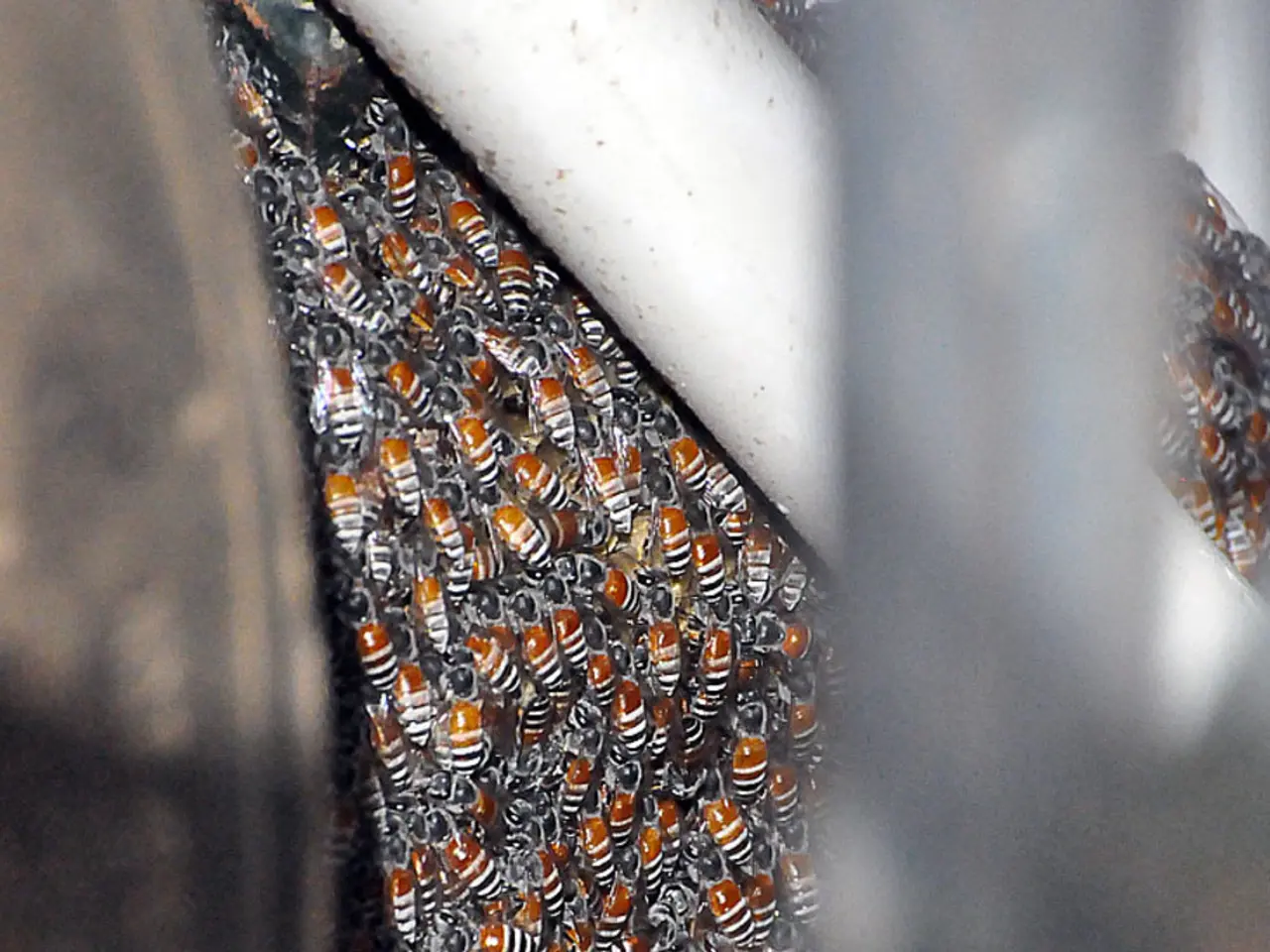Retired Michigan police dog assigned to detect dangerous bacterial infections in honeybees
Canine Scent Detection Dogs Join the Fight Against American Foulbrood
A nine-year-old English springer spaniel named Maple is making waves at Michigan State University's Pollinator Performance Center. Maple, who was previously a human remains detection dog for the St. Joseph County sheriff's office, has been trained to detect American foulbrood (AFB), a bacterial infection that poses a significant threat to honeybees.
The idea of using canine scent detection in beekeeping quickly took shape between Meghan Milbrath, an assistant professor in MSU's entomology department, and Sue Stejskal, Maple's longtime owner, trainer, and handler. Milbrath was working to develop diagnostic and screening tools for honeybee diseases when she was introduced to Stejskal by a veterinarian who had attended a honeybee training session.
Stejskal, a Michigan State graduate with over 25 years of experience training dogs for law enforcement and other uses, set about retraining Maple to identify the scent markers of AFB inside beehives, adapting methods used in police detection work. Canine scent detection dogs have proven to be highly effective in detecting AFB, playing a valuable role in reducing disease risks for beekeepers.
One of the key advantages of using these dogs is their ultrasensitive sense of smell. Dogs can detect even the tiniest traces of foulbrood in a hive, surpassing many conventional detection methods that often rely on visual inspection or lab testing. Early detection of AFB is crucial, as it enables beekeepers to isolate and manage infected colonies promptly, significantly reducing the spread of this contagious disease within and between apiaries.
By identifying AFB early, detection dogs help minimize the need for wide-scale hive destruction or chemical treatments, which can be costly and hazardous for beekeepers. This reduction in economic losses and exposure risks is vital, especially considering that American foulbrood is one of several factors contributing to the decline of bees and other pollinators in recent years, alongside insecticides, climate change, and reduced food diversity.
The Pollinator Performance Center plans to document Maple's training process and publish a guidebook by Milbrath and Stejskal to help other teams adopt the technique. With about 465 bee species native to Michigan alone, every effort to reduce disease risks is vital for the protection of critical pollinators.
In summary, canine scent detection dogs are a promising and effective tool in managing American foulbrood. They offer a practical, non-invasive, and economical disease surveillance method that supports beekeeper health and hive sustainability. Programs training retired K-9s like Maple have been successfully integrated into agricultural and pollinator health initiatives, showing practical benefits on the ground. These efforts are being expanded by research teams and agricultural departments aiming to promote bee health and safeguard food production.
- Innovation in canine training has led to the use of dogs for detecting American foulbrood (AFB) in Michigan State University's Pollinator Performance Center.
- English springer spaniel Maple, previously trained for human remains detection, is now contributing to the fight against AFB.
- The idea of using canine scent detection in beekeeping was developed by Meghan Milbrath and Sue Stejskal, working to improve diagnostic tools for honeybee diseases.
- Sue Stejskal, an experienced dog trainer, re-trained Maple to identify AFB scent markers, utilizing methods used in police work.
- Canine scent detection dogs have demonstrated high effectiveness in detecting AFB, reducing disease risks for beekeepers.
- The ultrasensitive sense of smell in dogs enables them to detect even the minutest traces of AFB, surpassing many conventional detection methods.
- Early detection of AFB by these dogs provides beekeepers with the opportunity to promptly manage infected colonies, thus reducing disease spread.
- By identifying AFB early, detection dogs help minimize the need for destructive hive disinfection or expensive chemical treatments, benefiting both beekeepers and the environment.
- The decline in bee and pollinator populations is linked to factors such as insecticides, climate change, reduced food diversity, and AFB.
- The Pollinator Performance Center plans to document Maple's training process and publish a guidebook to aid other teams adopting this technique.
- Programs training retired K-9s like Maple have been integrated into agricultural and pollinator health initiatives, showcasing practical benefits.
- With 465 native bee species in Michigan, every effort to reduce disease risks is crucial for the protection of critical pollinators.
- Canine scent detection dogs offer a practical, non-invasive, and economical disease surveillance method supporting beekeeper health and hive sustainability.
- Research teams and agricultural departments are expanding these efforts for the promotion of bee health and the safeguarding of food production.
- In the realm of technology, data and cloud computing play a significant role in managing and analyzing honeybee health data more efficiently.
- The advancement in technology has also influenced healthy cooking, as technology enables better food preparation techniques and diet analysis.
- Lifestyle, fashion, and beauty industries are constantly innovating and adapting to the changing needs of consumers, driven by technology and data.
- Environmental science plays a crucial role in understanding the impact of climate change on honeybee populations and implementing conservation measures.
- Golf, baseball, football, hockey, basketball, tennis, football, and racing are some sports that attract large audiences and generate significant economic activities.
- Sports-betting platforms, driven by technology, offer opportunities for fans to engage with their favorite sports on a newer, more exciting level.
- In the realm of pet care, technology developments have led to more advanced pet health monitoring systems, making it easier for pet owners to care for their pets.
- Adventure travel, shopping, and varied travel experiences are all sectors influenced by technological advancements, offering unique and memorable experiences for travel enthusiasts.




